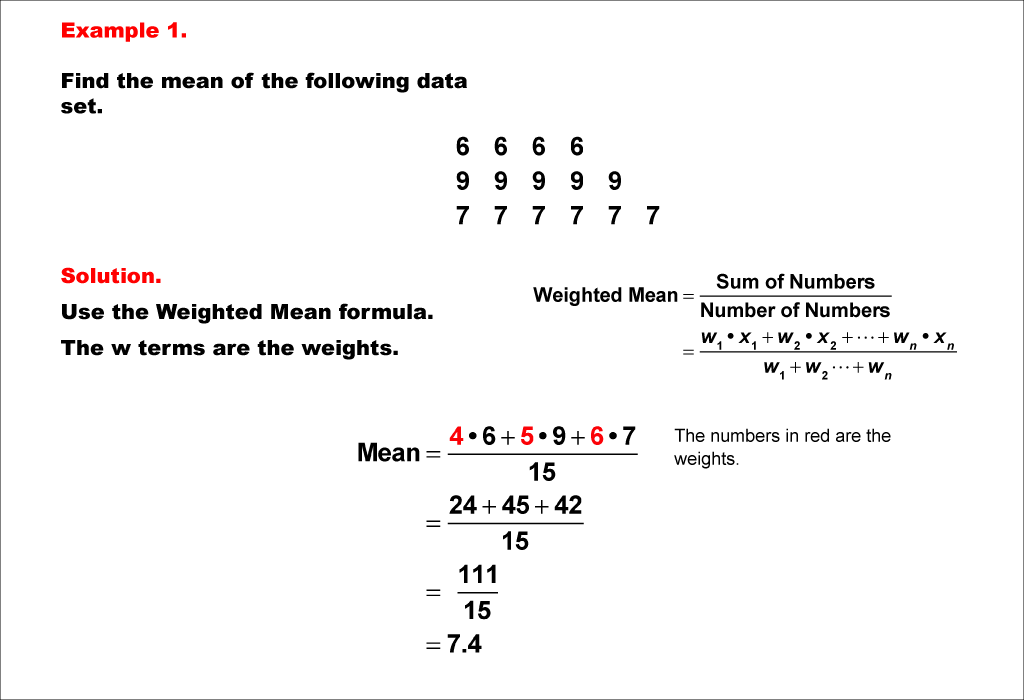
Display Title
Math Example--Measures of Central Tendency--Weighted Mean--Example 1
Display Title
Math Example--Measures of Central Tendency--Weighted Mean--Example 1

Topic
Measures of Central Tendency
Description
This example demonstrates the calculation of a weighted mean for a data set consisting of the values 6, 9, and 7, with weights of 4, 5, and 6 respectively. The weighted mean is computed using the formula: (4 * 6 + 5 * 9 + 6 * 7) / (4 + 5 + 6), resulting in a final answer of 7.4.
Weighted mean is a crucial concept in measures of central tendency, allowing for the consideration of the relative importance or frequency of each data point. This collection of examples helps teach this topic by providing varied scenarios and data sets, enabling students to practice and understand the application of the weighted mean formula in different contexts.
Exposure to multiple worked-out examples is essential for students to fully grasp the concept of weighted mean. By seeing the formula applied to diverse situations, students can develop a deeper understanding of how weights affect the final average and how to interpret the results in real-world scenarios.
Teacher's Script: Let's look at this example of calculating a weighted mean. Notice how we multiply each value by its weight before adding them up. This gives more importance to some values than others. Can you think of a real-life situation where we might use weighted means?
For a complete collection of math examples related to Measures of Central Tendency click on this link: Math Examples: Measures of Central Tendency: Weighted Mean Collection.
| Common Core Standards | CCSS.MATH.CONTENT.6.SP.B.5.C |
|---|---|
| Grade Range | 6 - 8 |
| Curriculum Nodes |
Algebra • Probability and Data Analysis • Data Analysis |
| Copyright Year | 2021 |
| Keywords | mean, measures of central tendency |